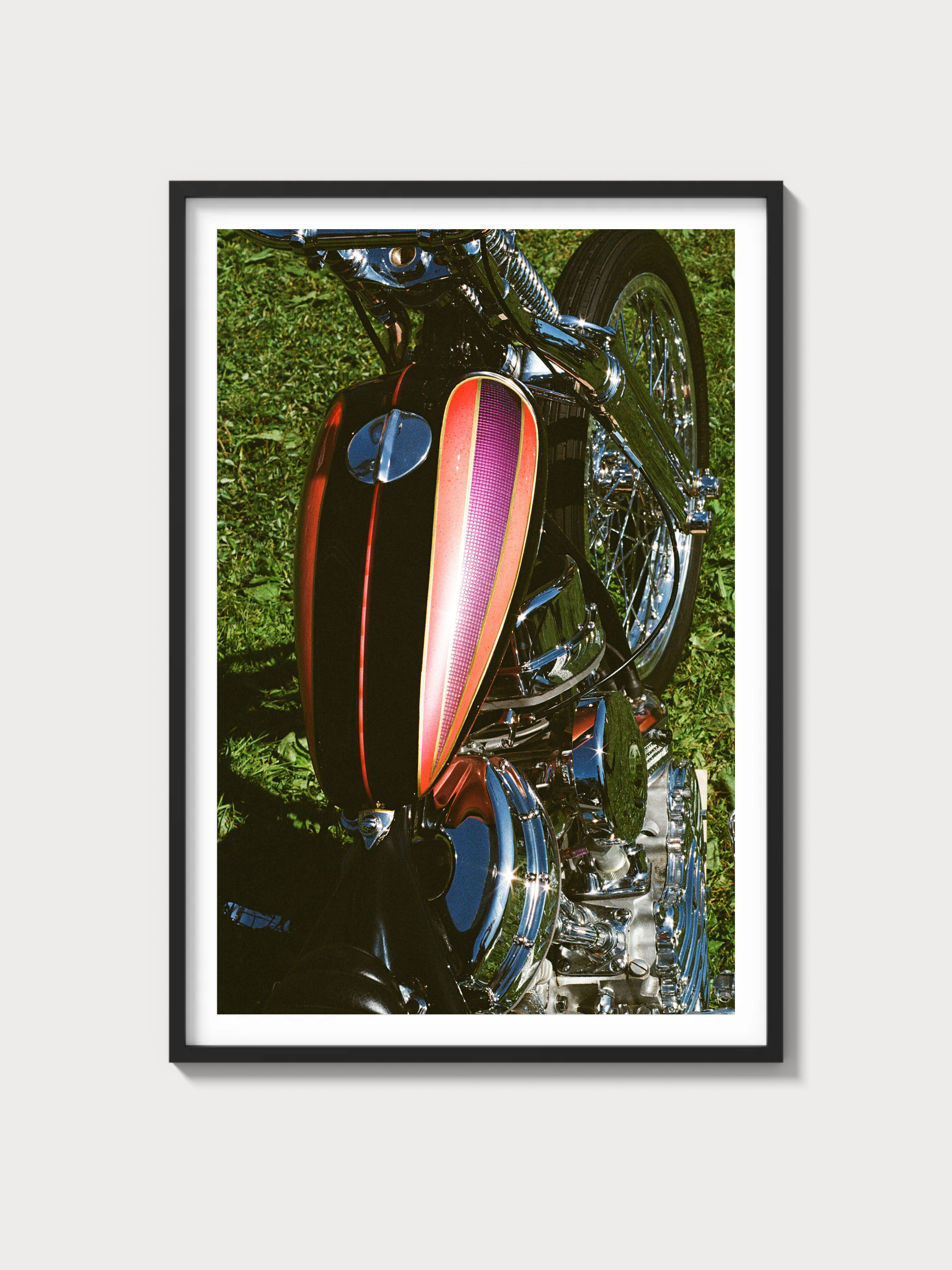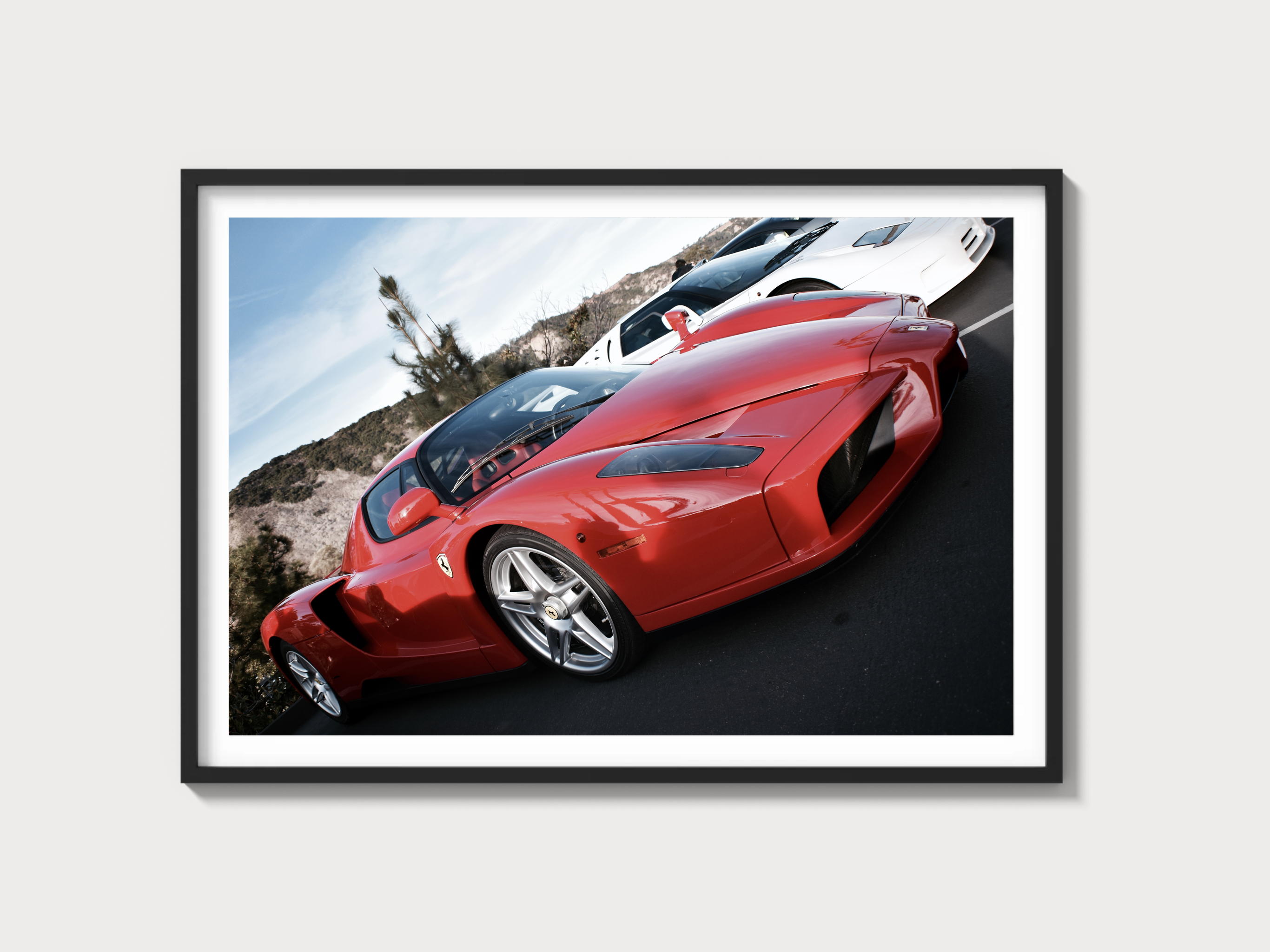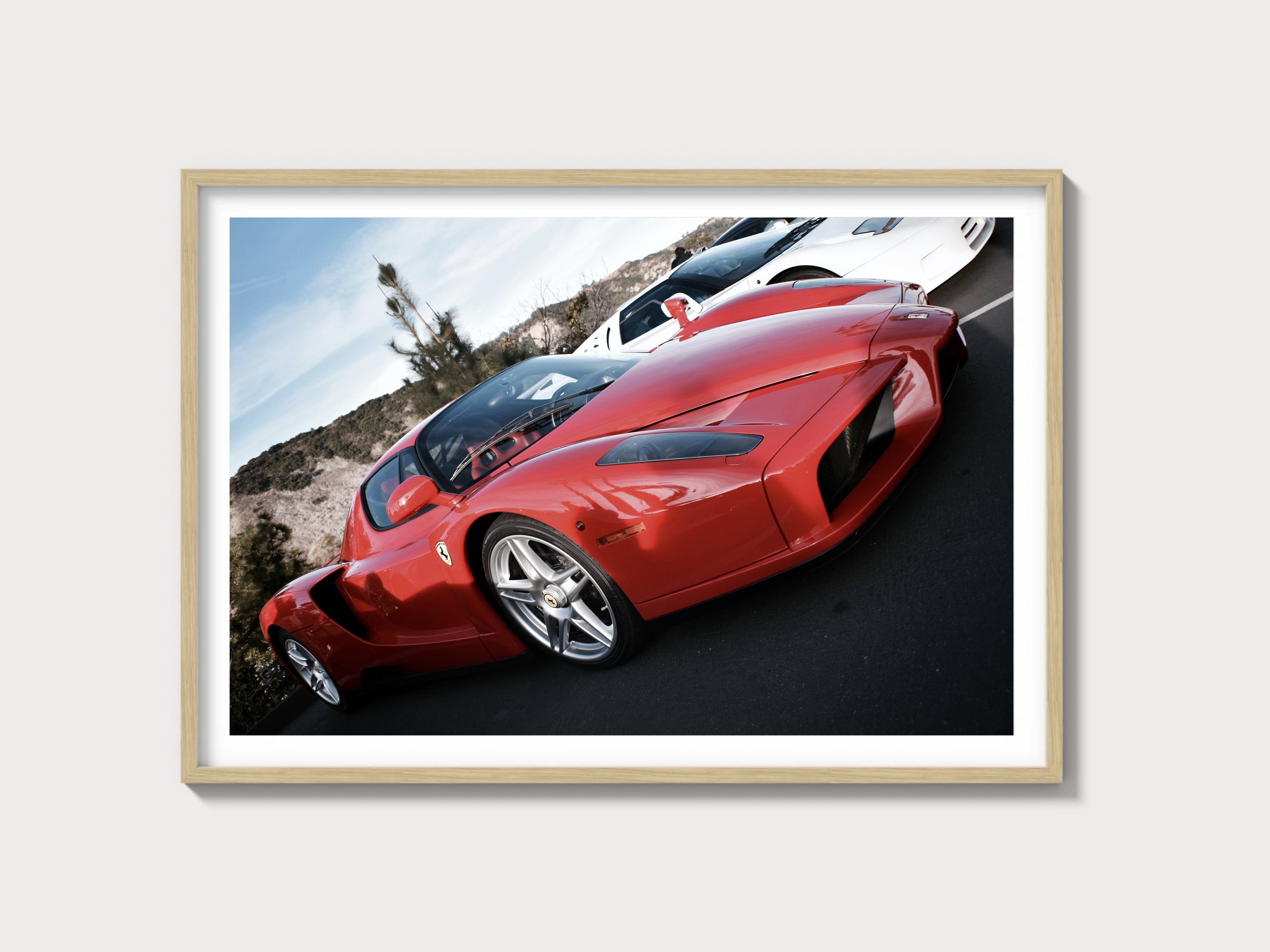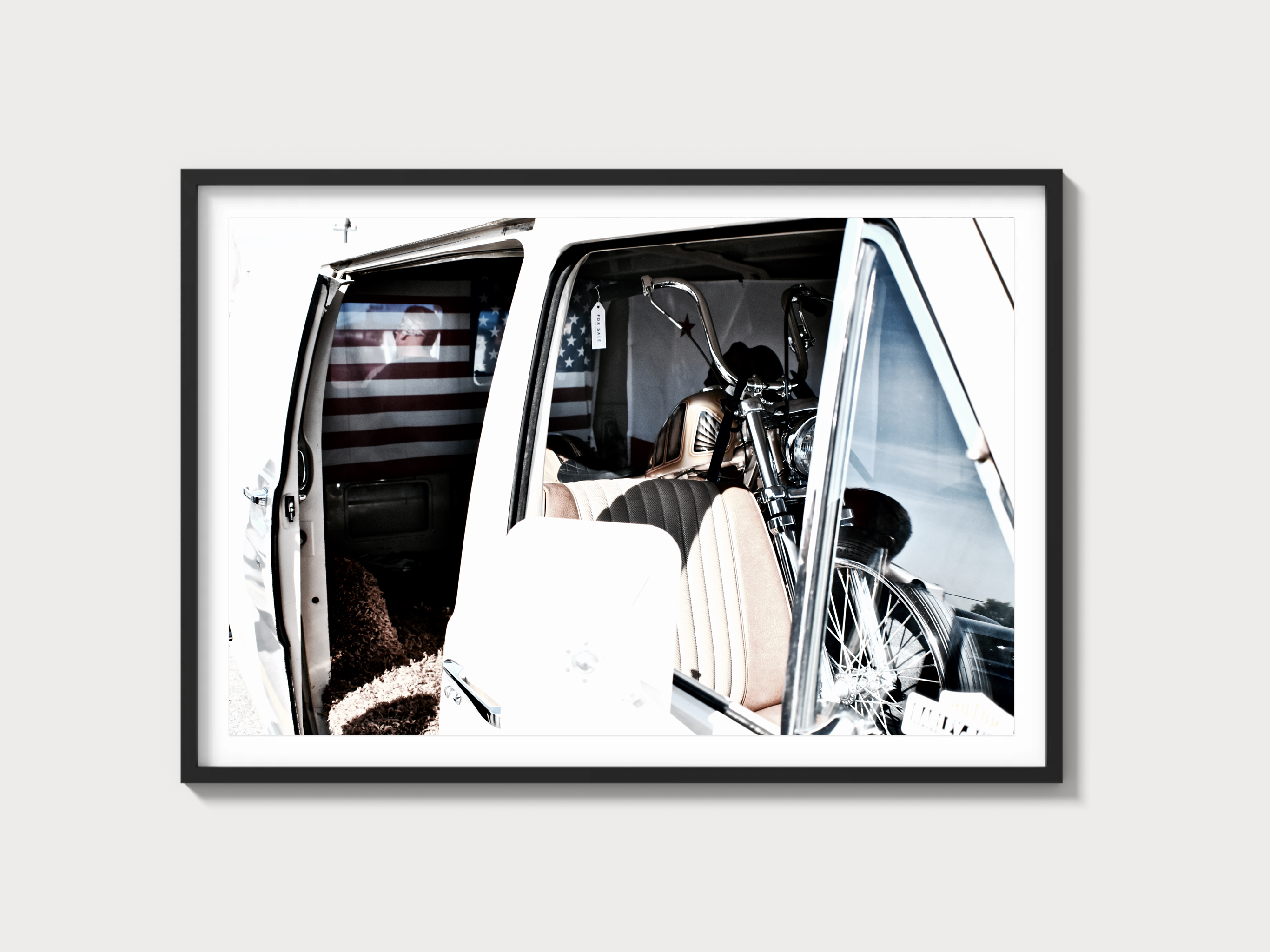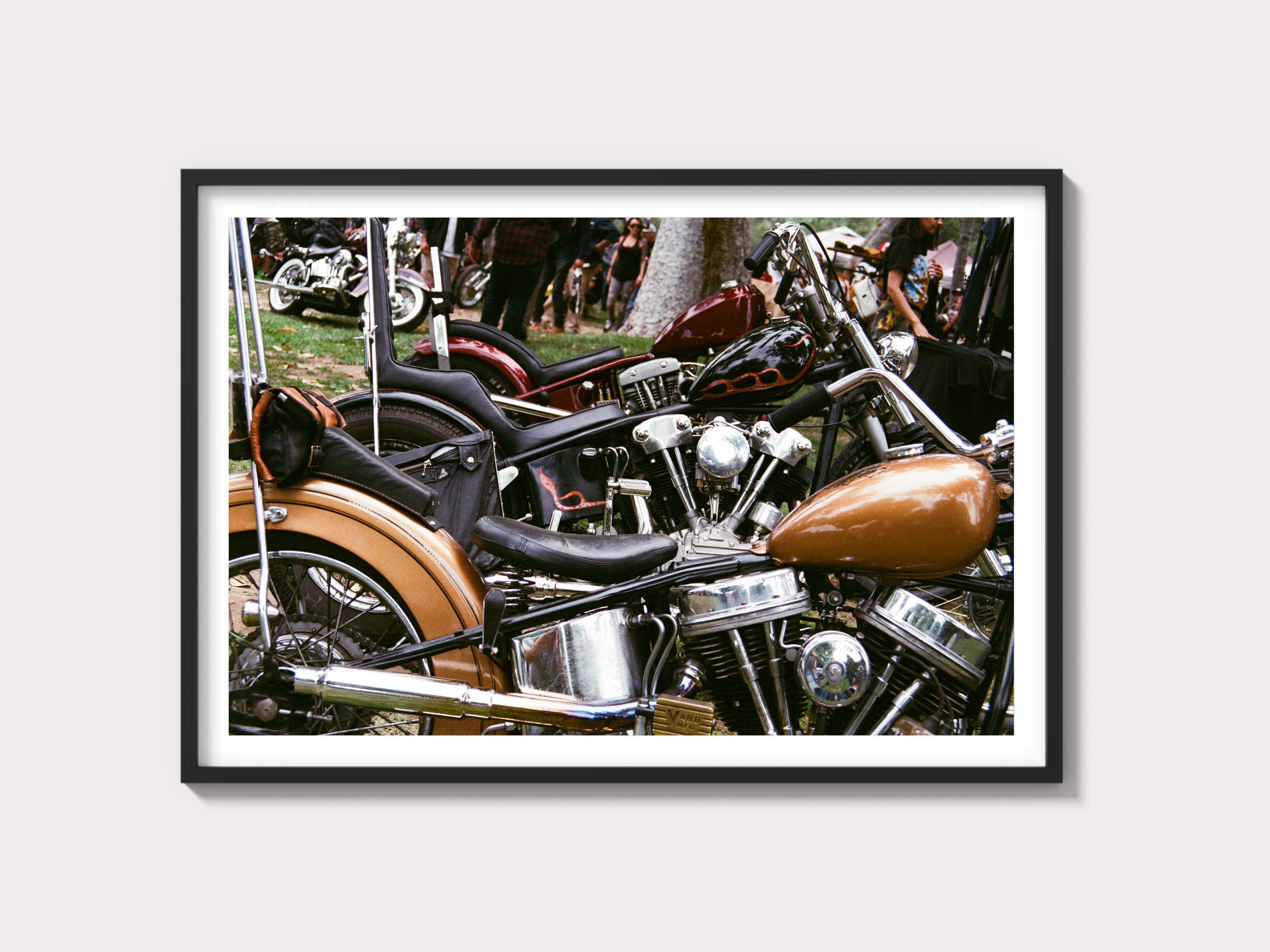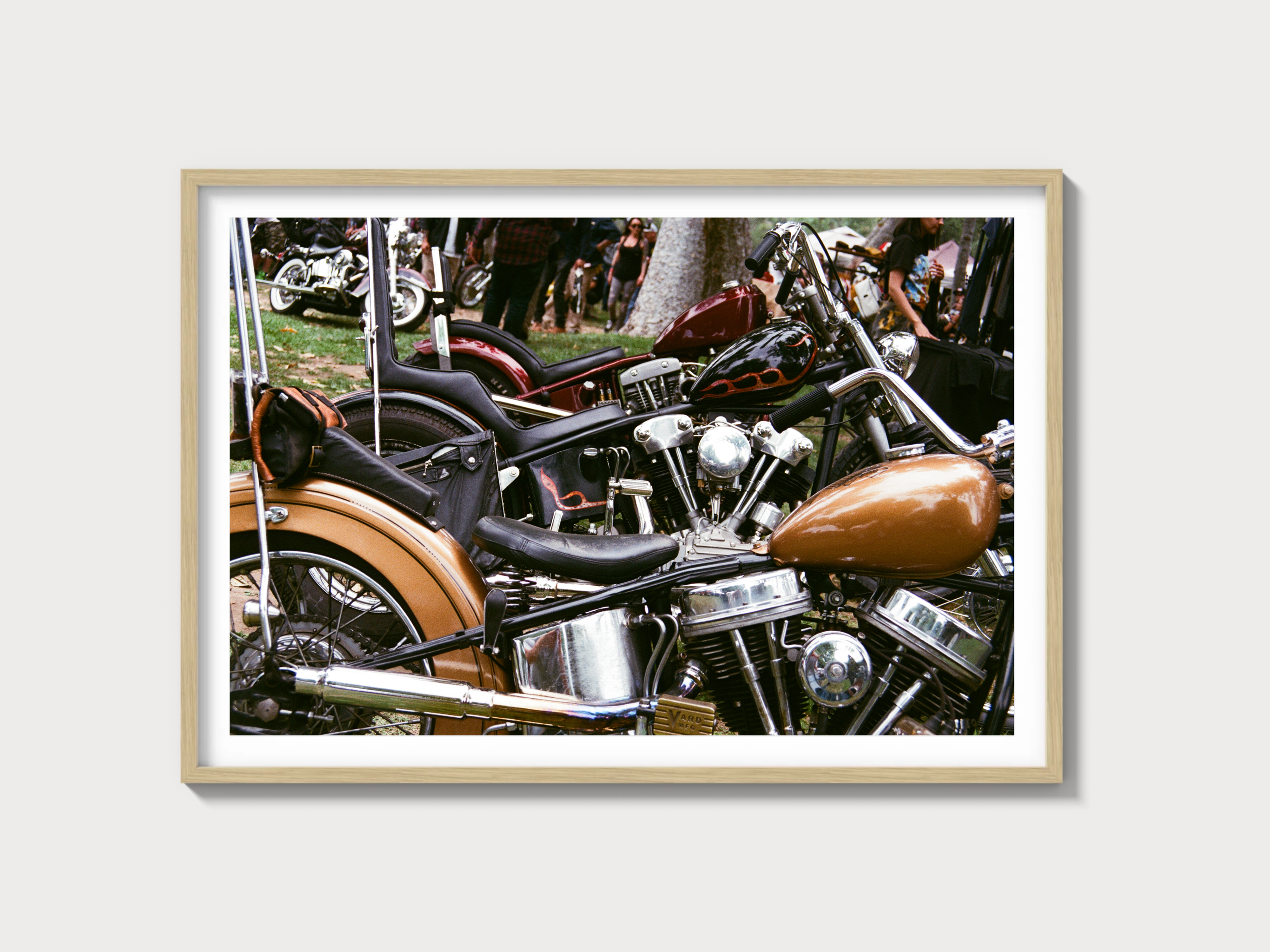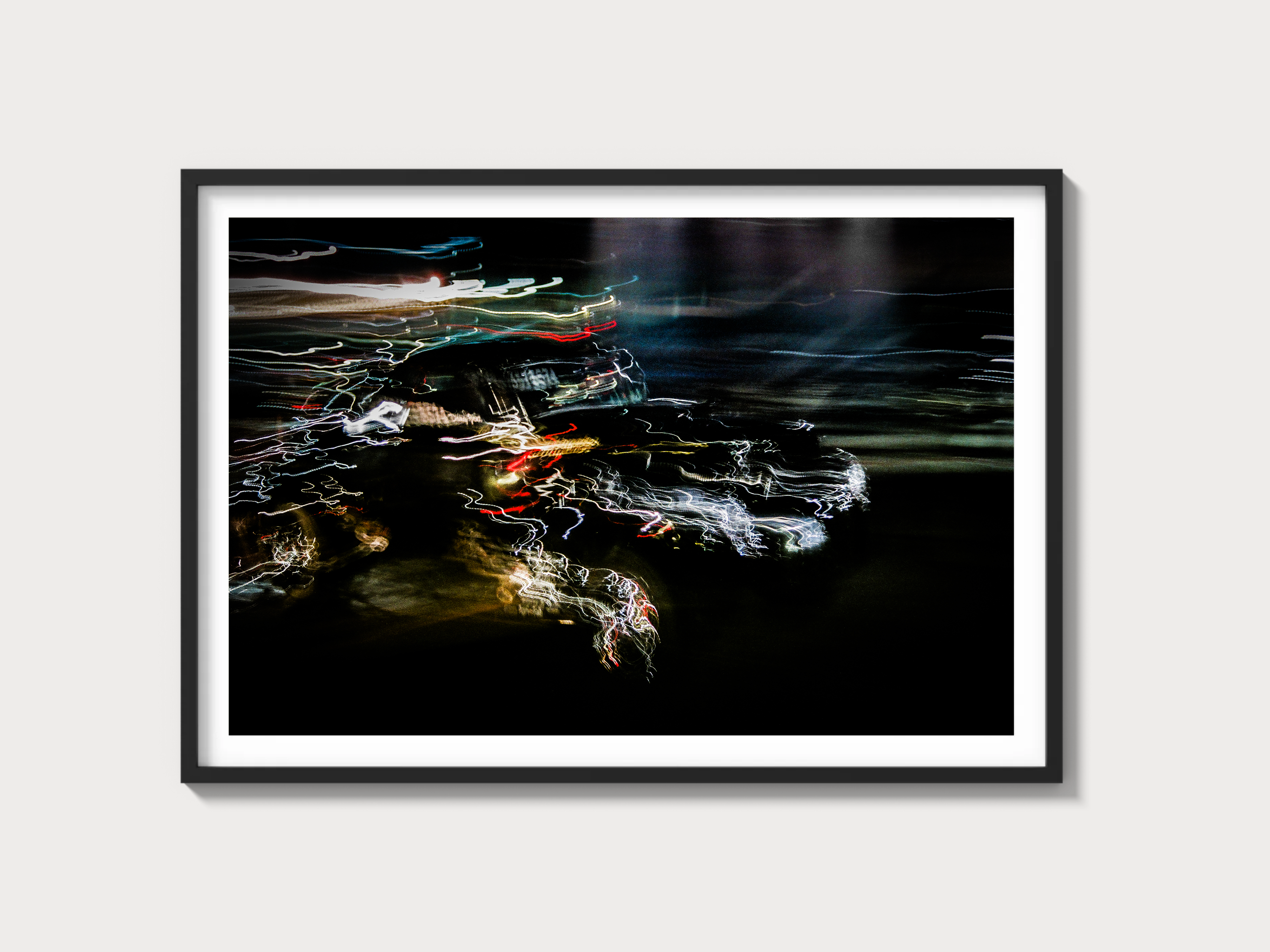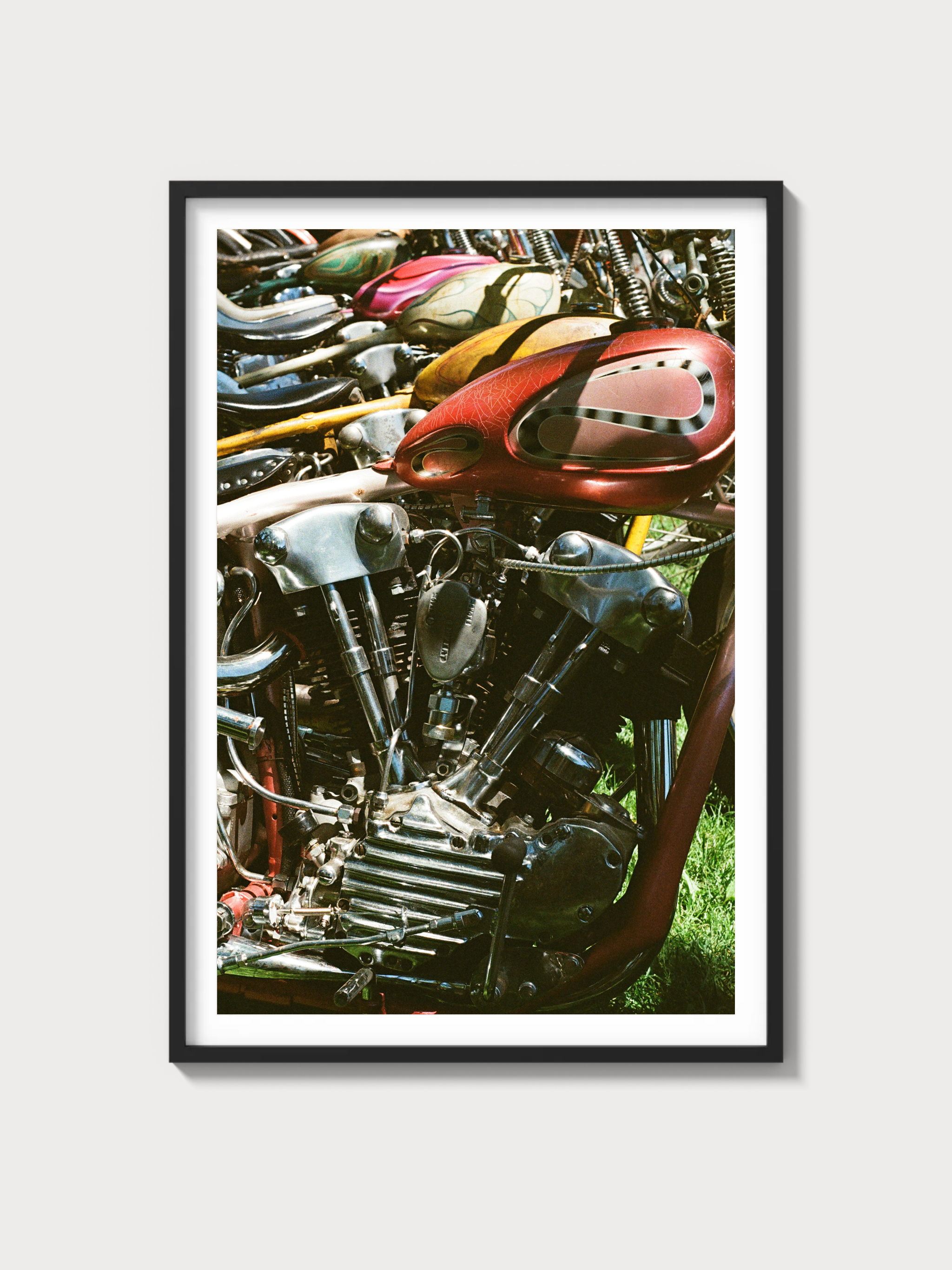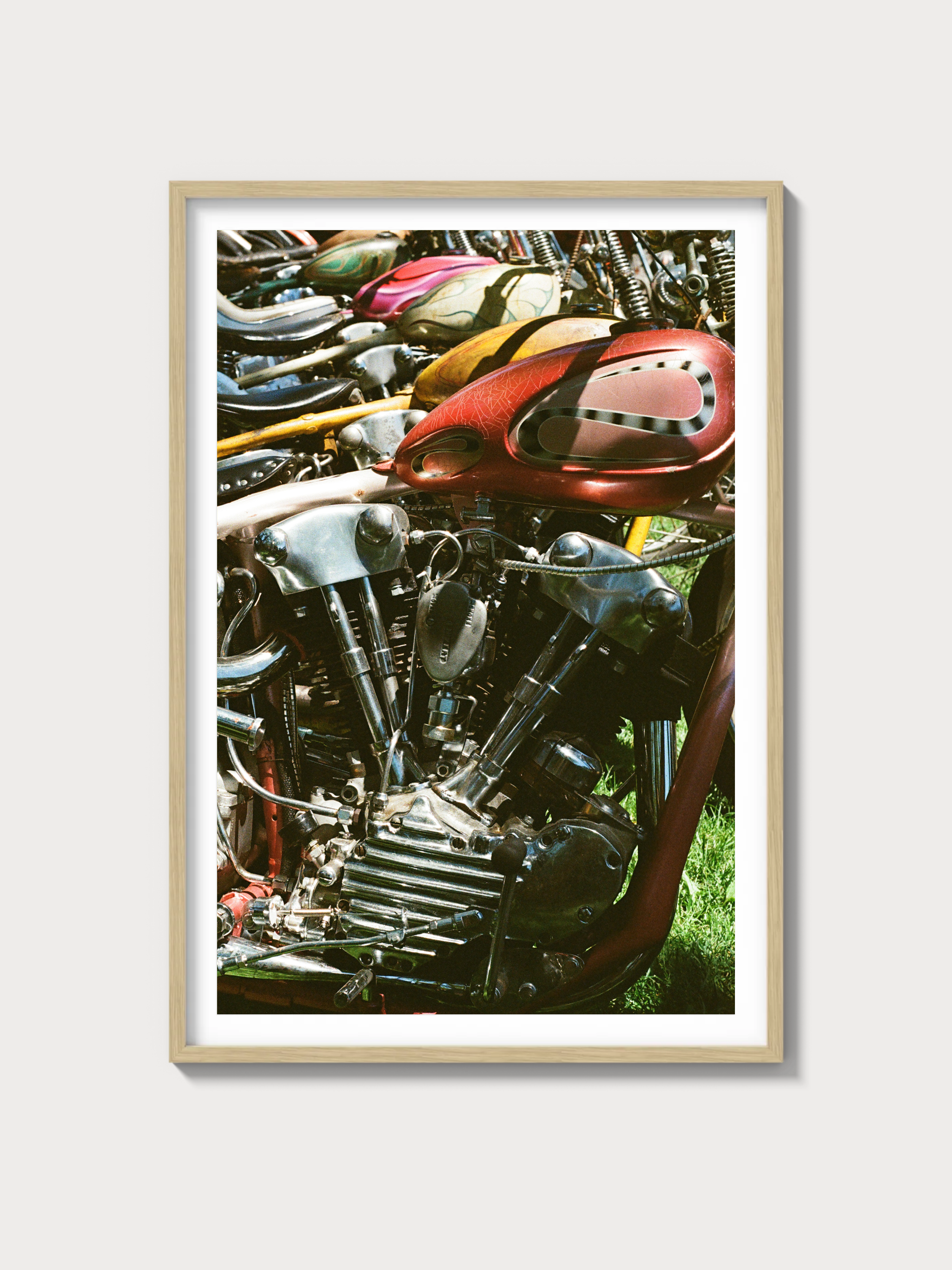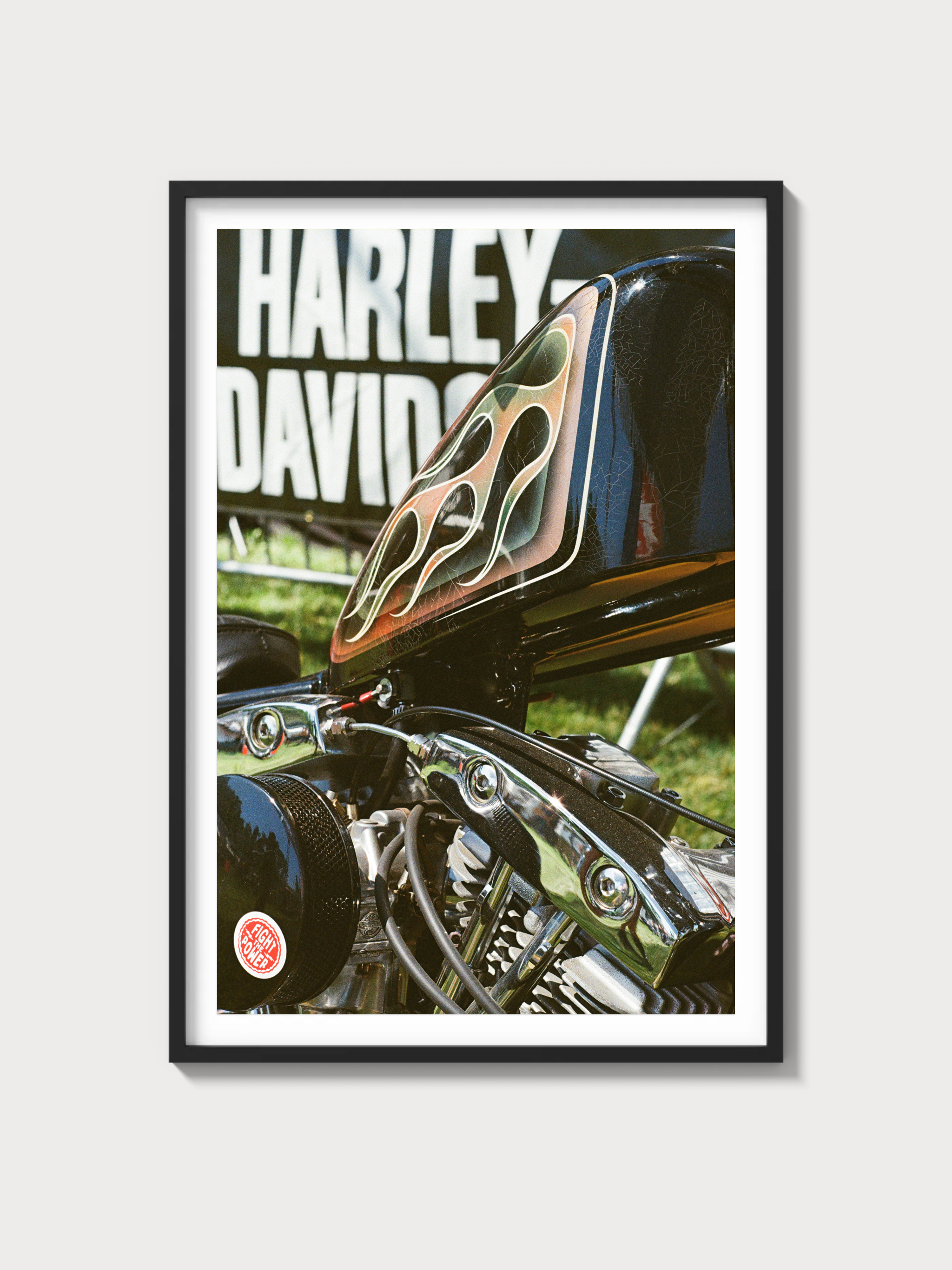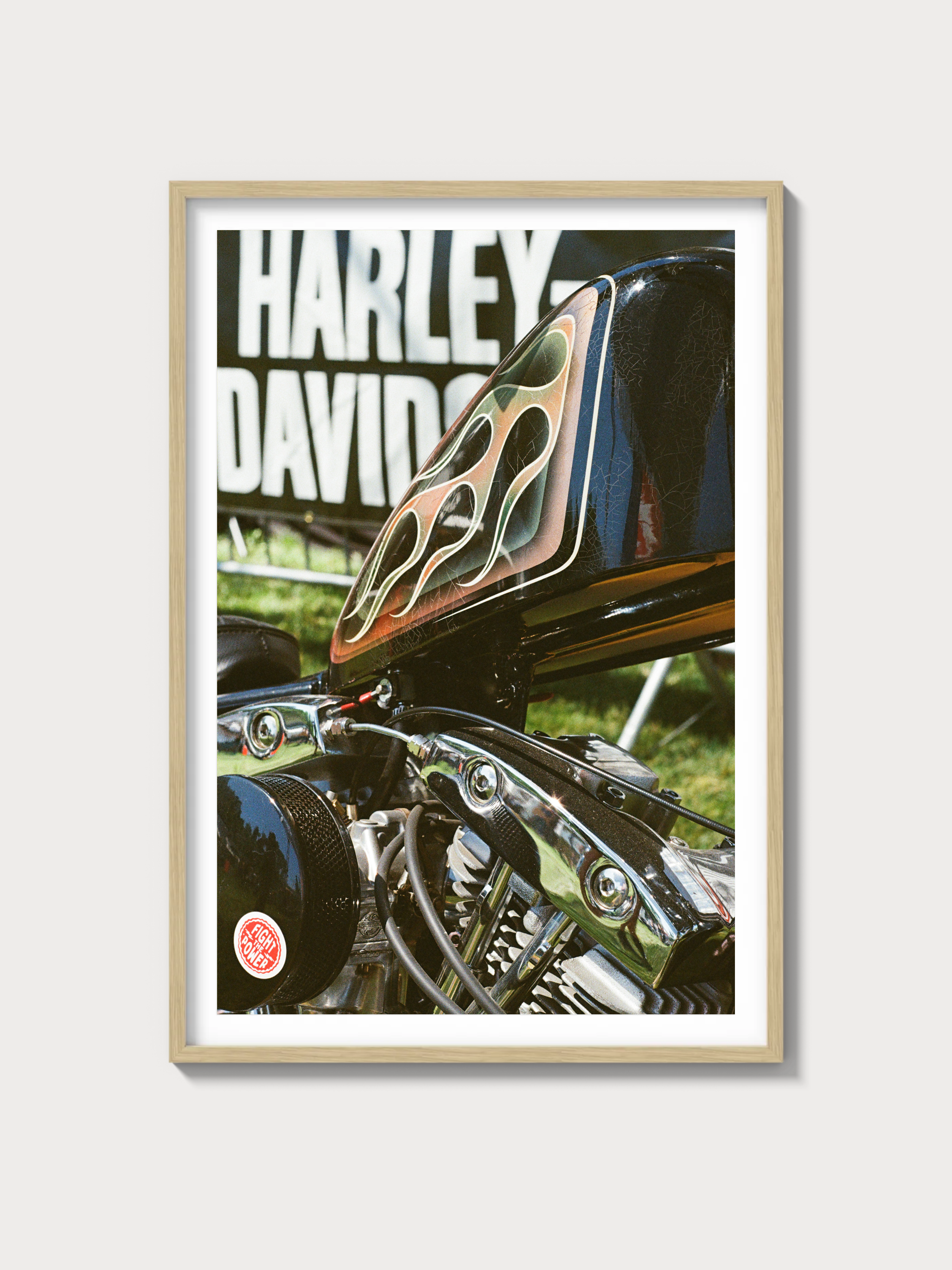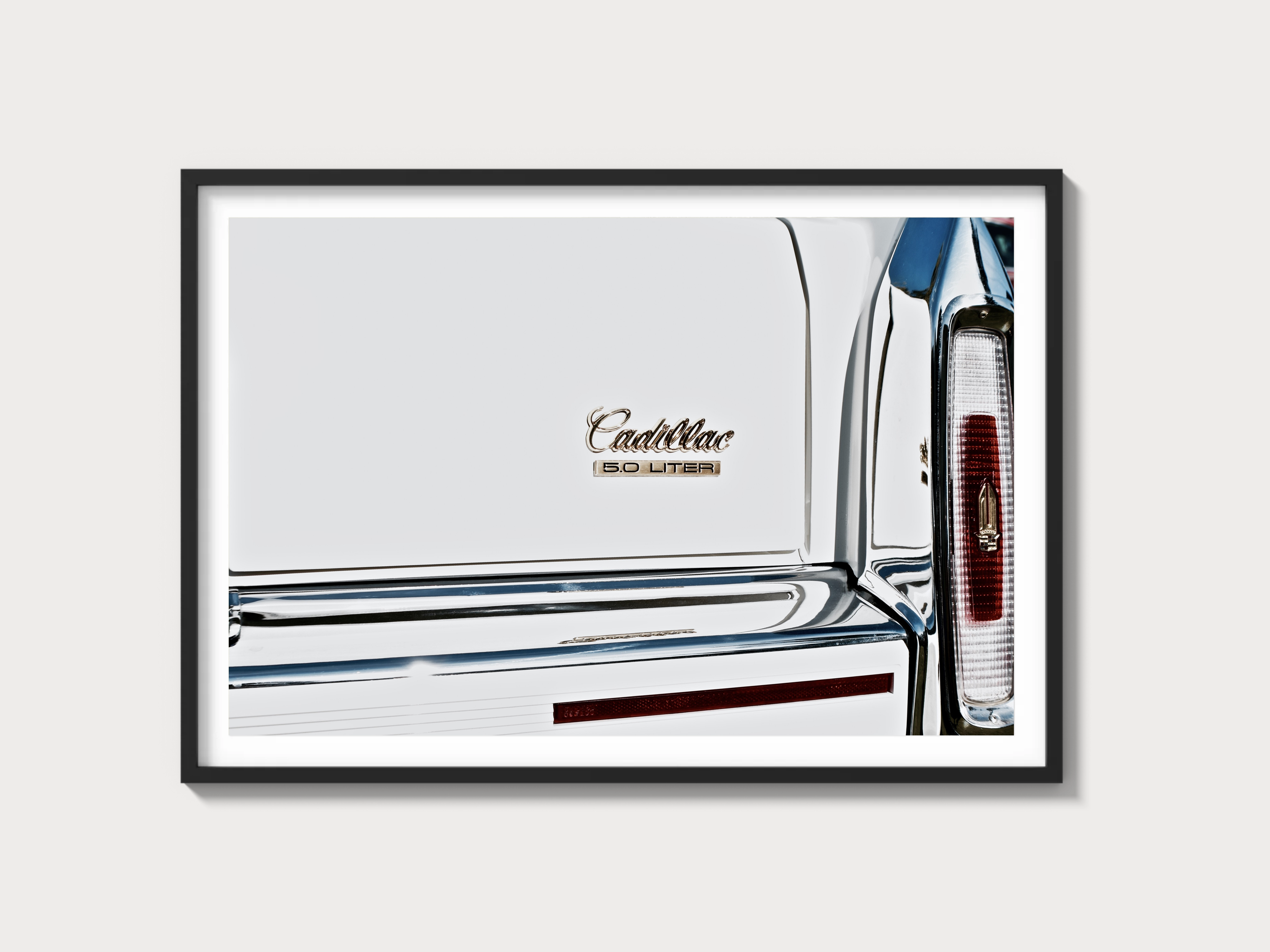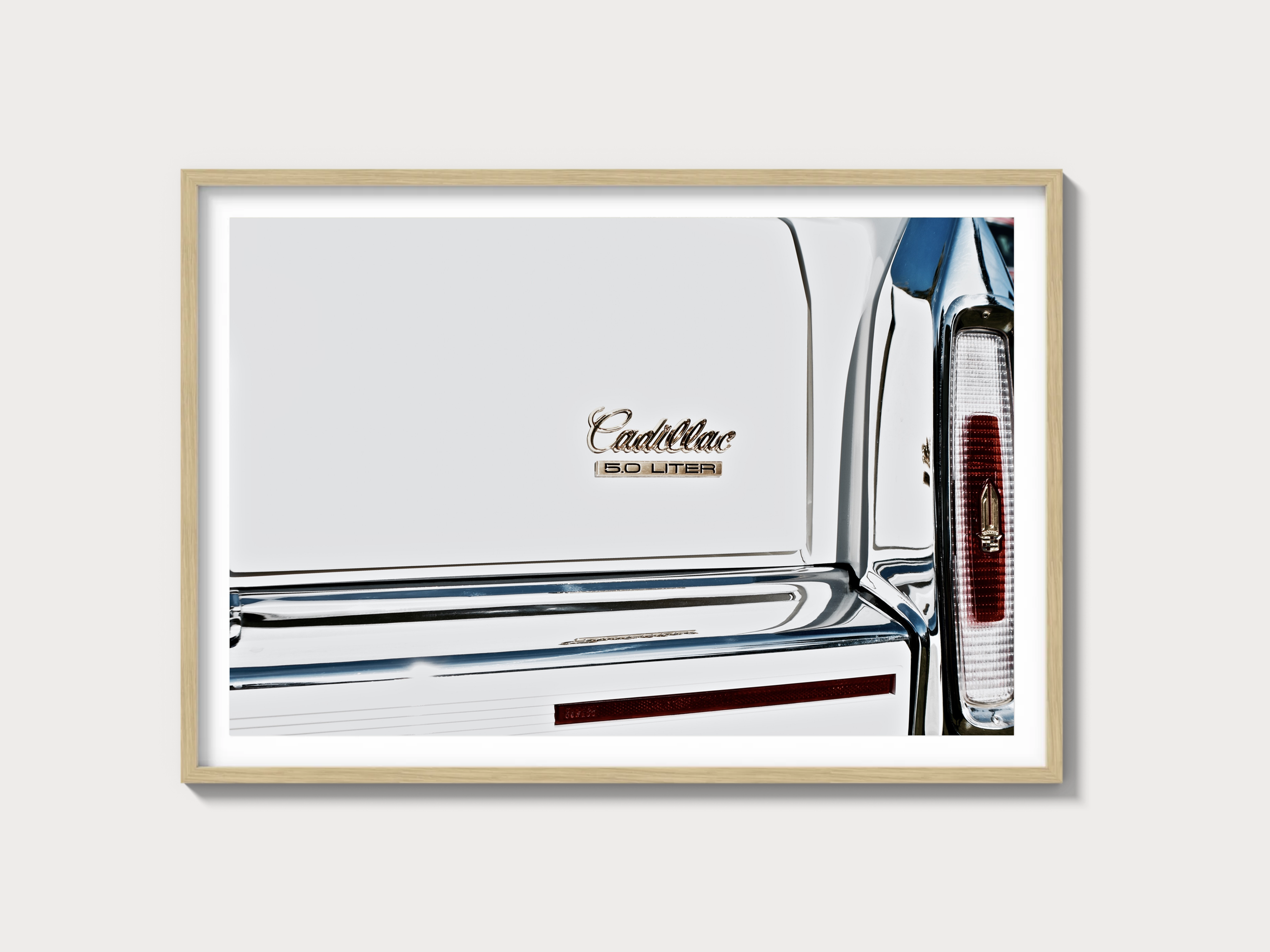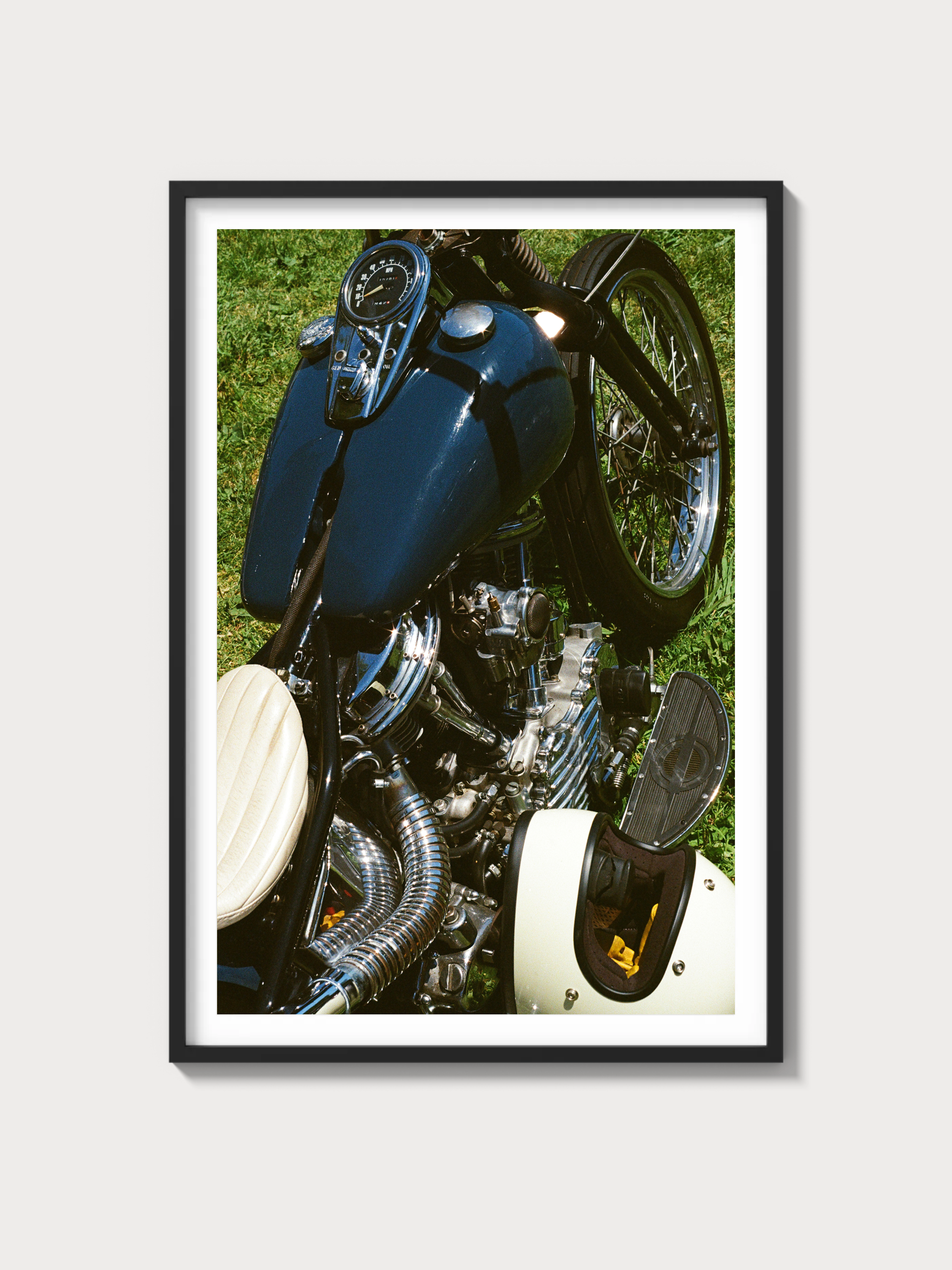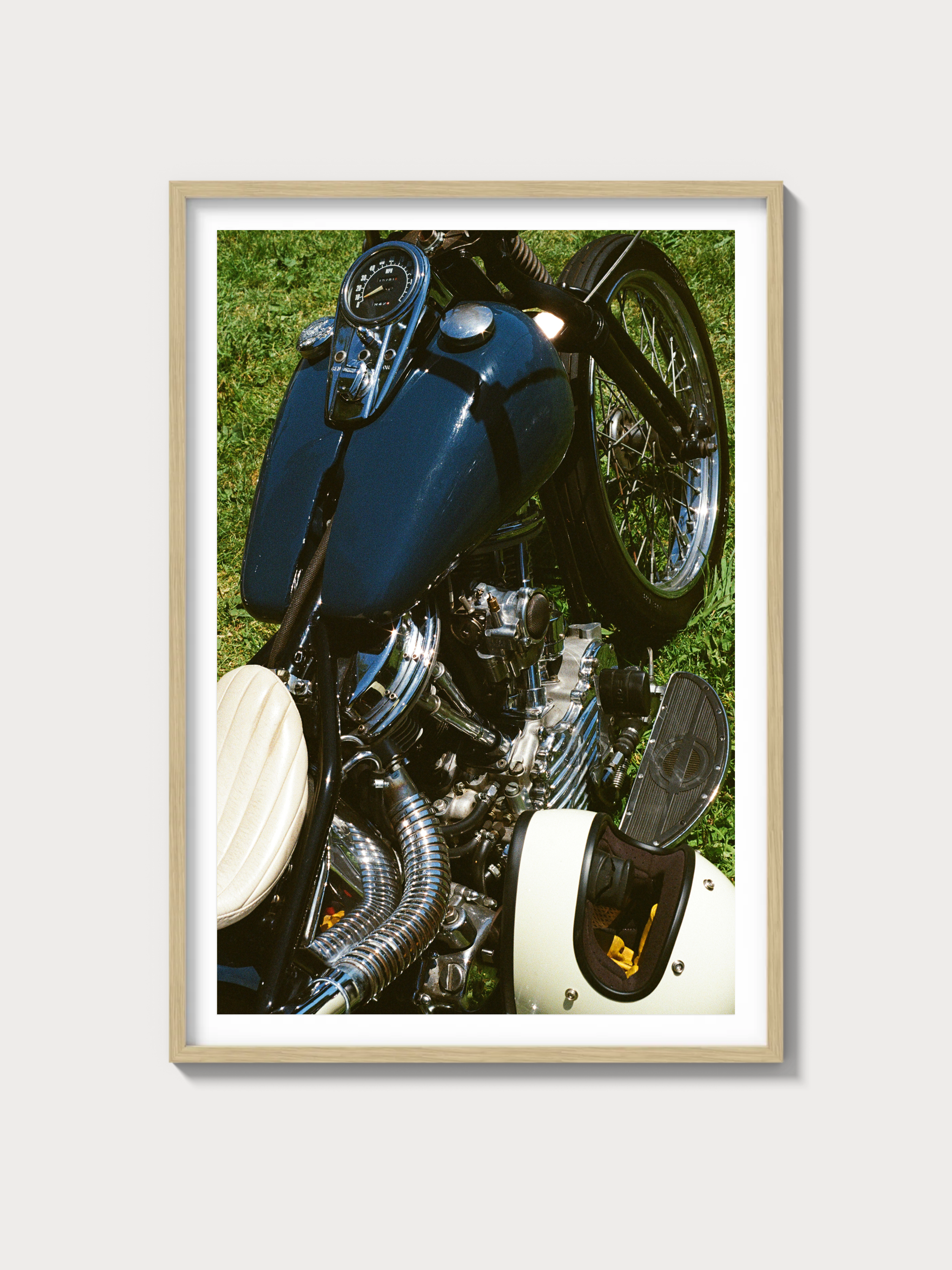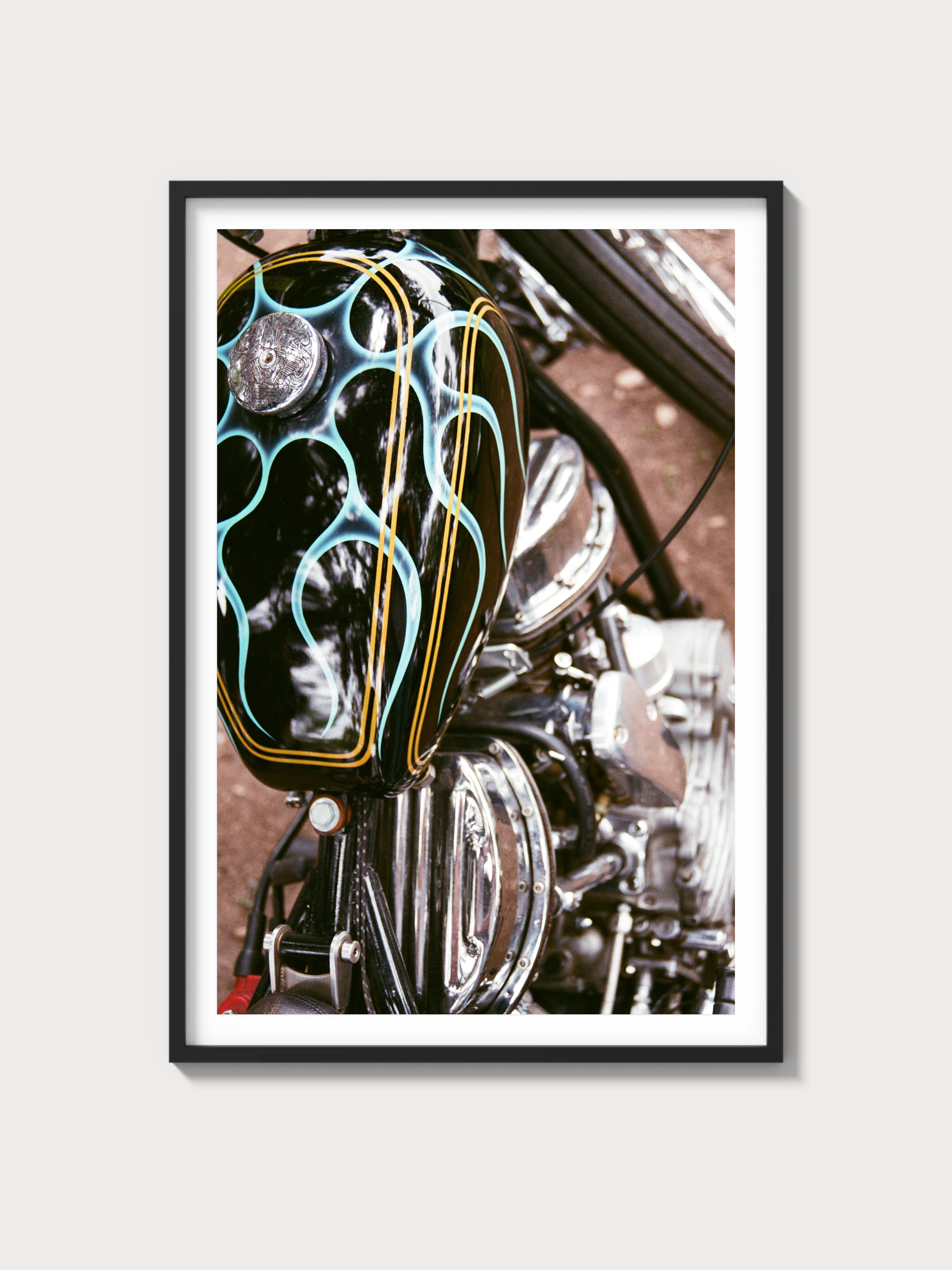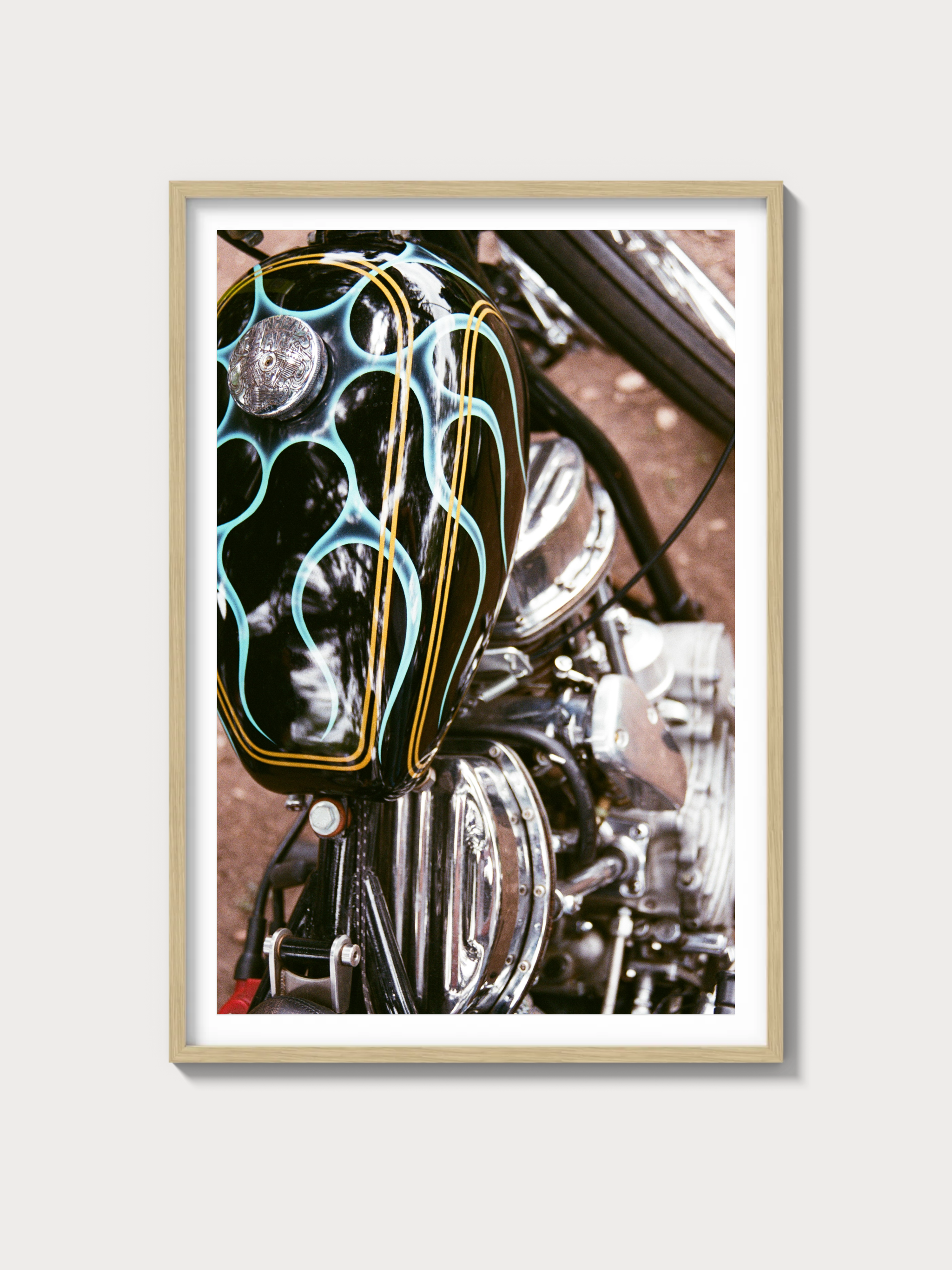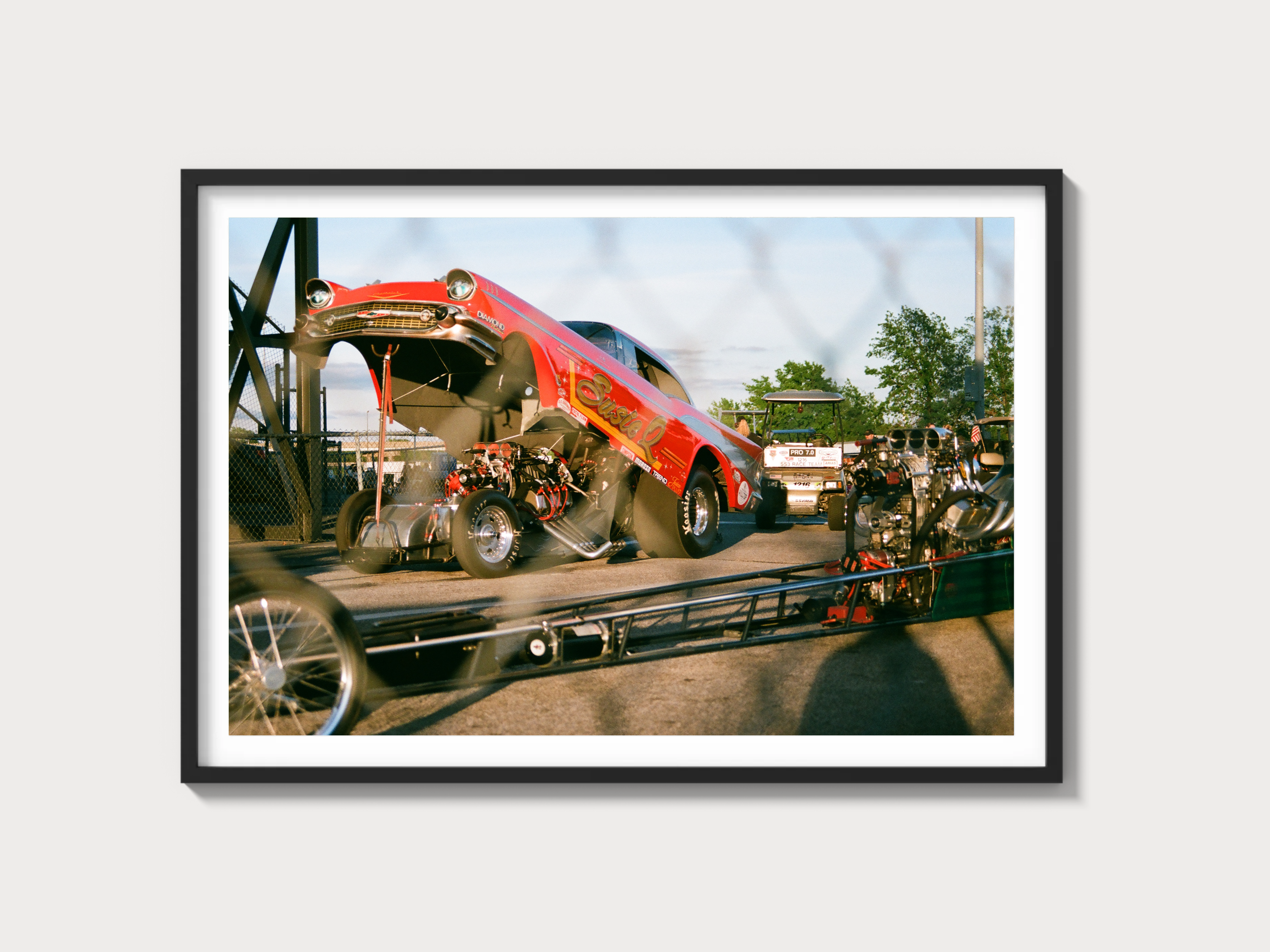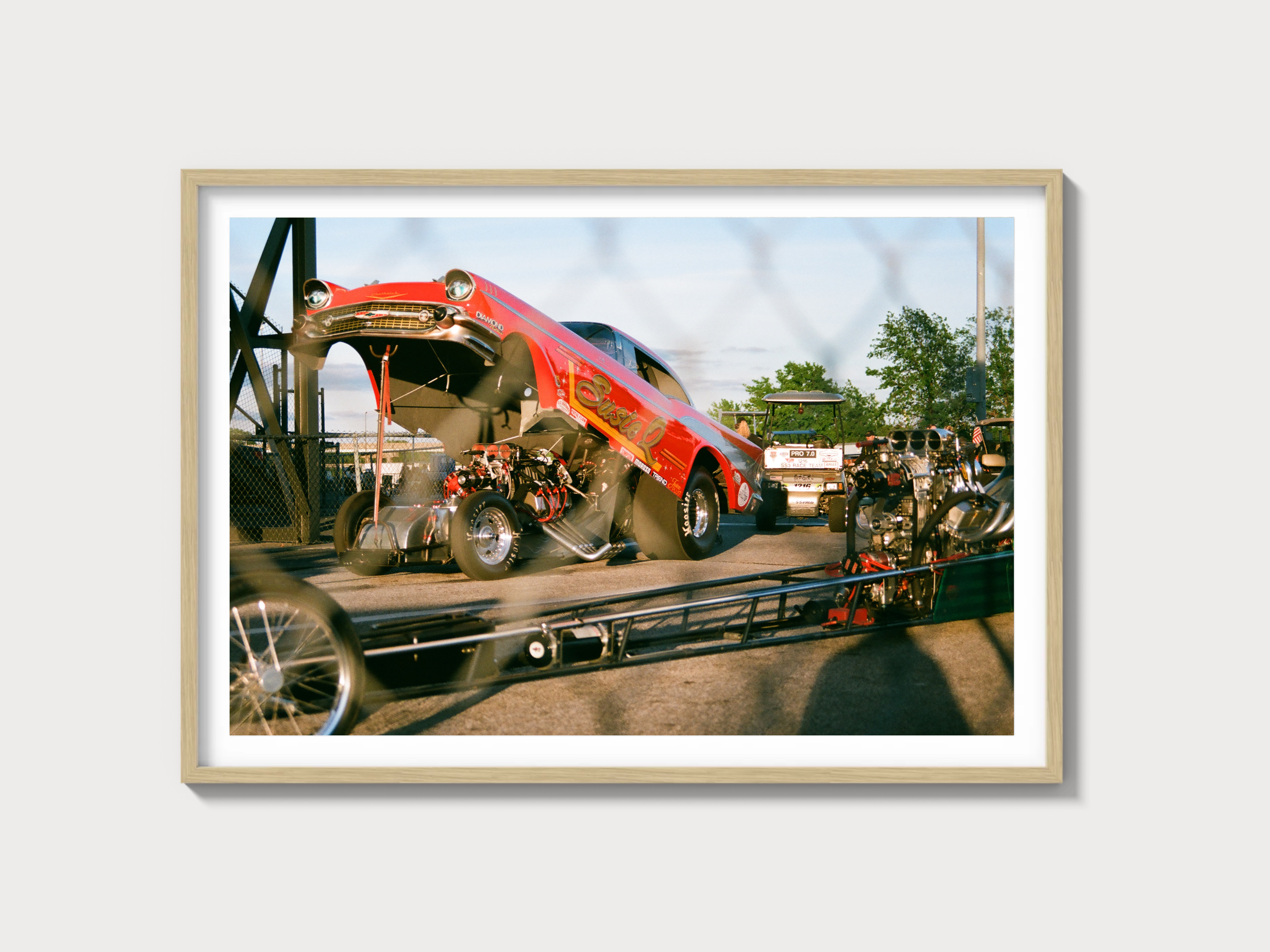2018–2024 Chevrolet Camaro ZL1 1LE — The Apex Predator of the Sixth-Gen Camaro
Historical Context and Development Background
The sixth-generation Chevrolet Camaro switched to GM’s Alpha architecture and immediately chased genuine circuit pace rather than pure spec-sheet theater. The standard ZL1 (launched for the 2017 model year) brought the LT4 supercharged V8 and credible all-round performance. The ZL1 1LE package, introduced for the 2018 model year, pushed directly into track-car territory with Multimatic DSSV dampers, reduced mass, aggressive aero, and a squarely no-compromise tire fitment strategy. This was not a styling kit; it was a transformation conceived within GM’s Performance and Motorsports engineering circles, with development laps and setup work conducted at GM’s Milford Road Course, VIR, and the Nürburgring. Chevrolet publicized an official Nürburgring Nordschleife lap in the low 7:16 range for the ZL1 1LE, a statement figure that placed this Camaro in exalted company among purpose-built exotics and track specials.
Chief Engineer Al Oppenheiser’s team leveraged Multimatic’s spool-valve damper technology (as seen in elite motorsport) and recalibrated nearly every touchpoint that matters on circuit: spring rates, aero balance, wheel and tire specifications, alignment range, and thermal management. In motorsport branding terms, Chevrolet’s NASCAR Cup Series entry adopted the Camaro ZL1 body, and while the race car’s construction is unrelated, the name recognition and track-first image carried over. On the showroom floor, the 1LE’s fiercest rivals were the Ford Mustang Shelby GT350R and later the GT500 with the Track Package, plus track-oriented offerings from Europe such as the Cayman GT4 and 911 variants—cars that traditionally traded on finesse rather than brute force. The Camaro’s achievement was that it blended both.
Engine and Technical Specifications
At its core is GM’s LT4: a 6.2-liter pushrod V8 with an Eaton TVS 1.7L supercharger and charge cooling, mated to either a 6-speed manual or (from 2019-on) an optional 10-speed automatic. The 1LE package does not add power; it makes power usable for longer and with more confidence by elevating chassis authority and aero stability.
| Specification | Detail |
|---|---|
| Engine configuration | 90° OHV V8 (LT4), aluminum block/heads, VVT |
| Displacement | 6,162 cc (6.2 L) |
| Induction type | Eaton TVS R1740 1.7 L supercharger, air-to-liquid intercooling |
| Horsepower | 650 hp (SAE) @ ~6,400 rpm |
| Torque | 650 lb-ft (SAE) @ ~3,600 rpm |
| Redline | ~6,500 rpm (fuel cut approximately above this) |
| Fuel system | Direct injection (high-pressure) |
| Compression ratio | 10.0:1 |
| Bore x stroke | 103.25 mm x 92.00 mm (4.065 in x 3.622 in) |
Chassis, Aero, and Tires
- Dampers: Multimatic DSSV spool-valve dampers with track-side adjustable front camber and ride-height adjusters.
- Springs/Bushings: Stiffer rates versus ZL1, solid-mounted rear cradle, and revised toe links for precision under load.
- Aero: High-mount fixed rear wing, underbody aero elements, and front dive planes; the package targets measurable downforce increase over the standard ZL1.
- Wheels/Tires: Forged 19-inch wheels (11-inch front, 12-inch rear) with Goodyear Eagle F1 Supercar 3R tires—305/30ZR19 front, 325/30ZR19 rear—track-biased compounds with limited wet/cold performance margins.
- Brakes: Brembo front six-piston calipers with ~390 mm two-piece rotors; rear four-piston calipers with ~365 mm rotors.
Driving Experience and Handling Dynamics
The ZL1 1LE trades the ZL1’s broader-band compliance for grip and feedback that stay intact after several hot laps. The DSSV dampers maintain platform control without the head-toss of an over-sprung street coilover; the car responds promptly to trail braking and mid-corner throttle adjustments, and it resists the float or pitch that can corrupt aero balance at speed. Steering—calibrated to the wide front contact patch—communicates surface texture and load in a way that invites confidence rather than intimidation, provided the tires are at operating temperature.
The Tremec 6-speed manual carries active rev-match that works as advertised and is a useful backstop in traffic or on cooldown laps. From 2019 onward, the optional 10-speed automatic adds repeatability in time attack sessions and helps the LT4 stay in the fat of its torque. Throttle response is crisp for a boosted pushrod engine; the LT4’s positive-displacement blower is on song early, so roll-on acceleration apex-to-exit is immediate, and traction control calibrations are sophisticated enough to permit meaningful slip without yanking the reins unnecessarily. The car will do long days at track pace if you respect tire and brake management and run suitable fluids.
Performance Specifications
Figures below represent manufacturer data and a range of independent instrumented tests; actual results vary with transmission, surface, and conditions.
| Metric | ZL1 1LE (2018–2024) |
|---|---|
| 0–60 mph | ~3.4–3.7 s (A10 typically quicker than M6) |
| Quarter-mile | ~11.5–11.8 s @ ~121–127 mph |
| Top speed | ~190 mph (aero-limited; lower than standard ZL1) |
| Curb weight | ~3,820–3,900 lb (equipment/transmission dependent) |
| Layout | Front-engine, rear-wheel drive |
| Brakes | Brembo: 6-piston/390 mm front, 4-piston/365 mm rear |
| Suspension | Front: dual-pivot strut with DSSV; Rear: 5-link with DSSV |
| Gearbox | 6-speed manual (rev-match) or 10-speed automatic (from 2019) |
Variant Breakdown and Year-to-Year Differences
The ZL1 1LE is a package atop the sixth-gen Camaro ZL1 coupe. Major deltas center on transmission availability and incremental equipment changes; powertrain output remained constant.
| Model year(s) | Key features | Production numbers | Market notes |
|---|---|---|---|
| 2018 | ZL1 1LE launch; LT4 650 hp; DSSV dampers; aero package with wing and dive planes; forged 19-in wheels with Goodyear 3R; 6-speed manual only. | Not publicly disclosed by GM | Primarily North America; no factory RHD. |
| 2019–2024 | Adds optional 10-speed automatic; continuing DSSV/aero/3R hardware; infotainment and minor equipment updates over time. ZL1 front fascia unchanged by the mid-cycle styling revision that affected other Camaro trims. | Not publicly disclosed by GM | North America focus; limited specialty imports in select regions; no factory RHD. |
Notes: Special appearance packages and limited-run commemorative treatments were offered on the broader ZL1 line; availability within the 1LE subset and precise counts have not been publicly broken out by Chevrolet.
Ownership Notes: Maintenance, Parts, and Living With a ZL1 1LE
- Fluids: Use GM-approved oil (track-capable formulations are specified by Chevrolet for LT engines). For cars driven on circuit, engine oil, transmission fluid, and differential fluid service intervals tighten significantly compared with street-only schedules; follow the track maintenance guidance in the owner’s manual.
- Cooling/Thermal: The LT4’s charge-cooling system is robust, but consistent cool-down laps and attention to intercooler heat soak help preserve repeatability. Inspect the supercharger drive belt routinely.
- DSSV Dampers: Exceptionally consistent on track. They are serviceable items; budget accordingly if used heavily. Ride height and alignment are adjustable within factory provisions—setups should be done by a shop familiar with DSSV hardware.
- Tires: Goodyear Eagle F1 Supercar 3R delivers outstanding dry grip but has limited cold/wet capability and wears quickly under track use. Many owners keep a second wheelset for rain or street duty.
- Brakes: The factory Brembo system is stout. Track pads and high-temp DOT 4 fluid are recommended for extended lapping. Two-piece front rotors help manage heat and are consumable items in dedicated track use.
- Alignment: The 1LE provides generous negative camber range. Track settings improve tire life and consistency but will accelerate inner-edge wear in street driving—swap to street alignment if mileage matters.
- Service Intervals: Spark plugs and coolant follow GM’s standard intervals for the LT4; however, heavy track use may demand earlier attention. Always cross-check the manual’s severe-use schedule.
- Parts Availability: OE aero components, DSSV dampers, and specific 1LE hardware are available through GM and performance dealers. Wheels and 3R tires are widely sourced but costlier than standard ZL1 fitments.
Known Quirks and Considerations
- Ground Clearance: The front splitter and dive planes are vulnerable to steep driveways and curbing—approach angles matter.
- NVH: Reduced sound deadening and solid-mounted rear cradle elevate cabin noise relative to the standard ZL1; normal for the package.
- Weather Window: 3R tires are track-biased; swap to more all-weather-friendly rubber for street duty in cool or wet conditions.
Cultural Relevance and Market Perspective
The ZL1 1LE cemented the sixth-gen Camaro’s reputation as a bona fide track weapon. Its publicized Nordschleife time sat shoulder-to-shoulder with dedicated European track specials and reshaped expectations for American pony cars. Media outlets consistently lauded its brake consistency, front-end authority, and the maturity of its chassis tuning.
Collector desirability hinges on originality, mileage, and equipment (manual versus A10 being a matter of taste and intent). Public auction and private-sale histories show that the 1LE typically commands a premium over a comparable standard ZL1, with exceptional-condition cars and limited-appearance packages drawing additional attention. Cars with documented track preparation (fluids, alignment specs, and wear items) but minimal irreversible modifications are often viewed most favorably by informed buyers.
Frequently Asked Questions
-
What’s the difference between the ZL1 and the ZL1 1LE?
The 1LE adds Multimatic DSSV dampers, stiffer springs and bushings, a solid-mounted rear cradle, wider and lighter wheels with Goodyear 3R tires, aggressive aero (rear wing and front dive planes), additional cooling/aero attention, and track-alignment provisions. Power output is unchanged. -
Is the ZL1 1LE manual-only?
No. The 2018 ZL1 1LE launched with the 6-speed manual only. From 2019 onward, the 10-speed automatic was available. -
How fast is it?
Independent tests have recorded ~3.4–3.7 s 0–60 mph, ~11.5–11.8 s quarter-mile, and an aero-limited top speed around 190 mph. -
What are the tire sizes?
Factory fitment is 305/30ZR19 front and 325/30ZR19 rear on 19x11/19x12 forged wheels, typically with Goodyear Eagle F1 Supercar 3R tires. -
Any common issues?
Track-driven cars can accelerate wear of consumables (tires, pads, rotors). Watch for splitter/undertray damage, chipped front aero, and heat-cycled 3R tires. Routine inspection of supercharger drive components and cooling hardware is prudent. -
Daily-drivable?
It’s livable, but the 1LE’s ride, tire noise, and 3R weather sensitivity are compromises. Many owners fit alternative street rubber and keep 3Rs for the track. -
Value outlook?
Historically, the 1LE specification commands a premium over the standard ZL1 due to its capability and relative scarcity. Condition, originality, and documentation drive results.
Technical Footnotes for Enthusiasts
- The LT4 uses a cam-in-block architecture with variable valve timing; its Eaton TVS supercharger delivers immediate boost response and strong midrange torque—ideal for corner exits.
- The DSSV dampers control piston velocity with precisely machined spool valves rather than shims, yielding repeatable damping characteristics lap after lap.
- Alignment headroom is a silent hero here: the car can be set up with significant negative camber without resorting to aftermarket top mounts, improving front tire life during extended sessions.




